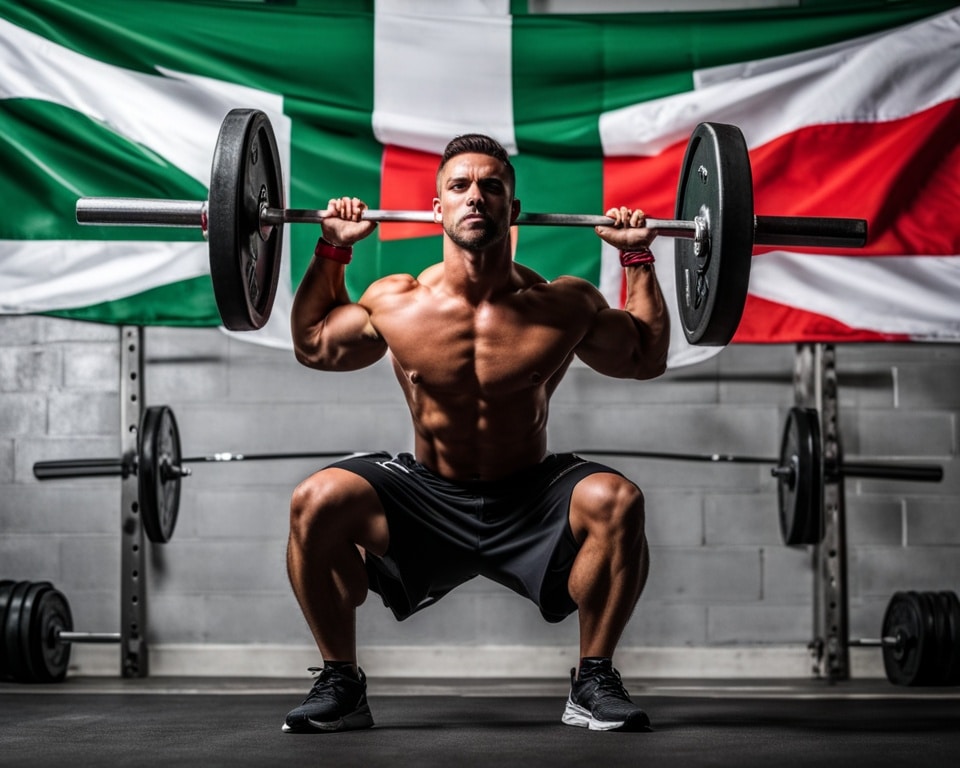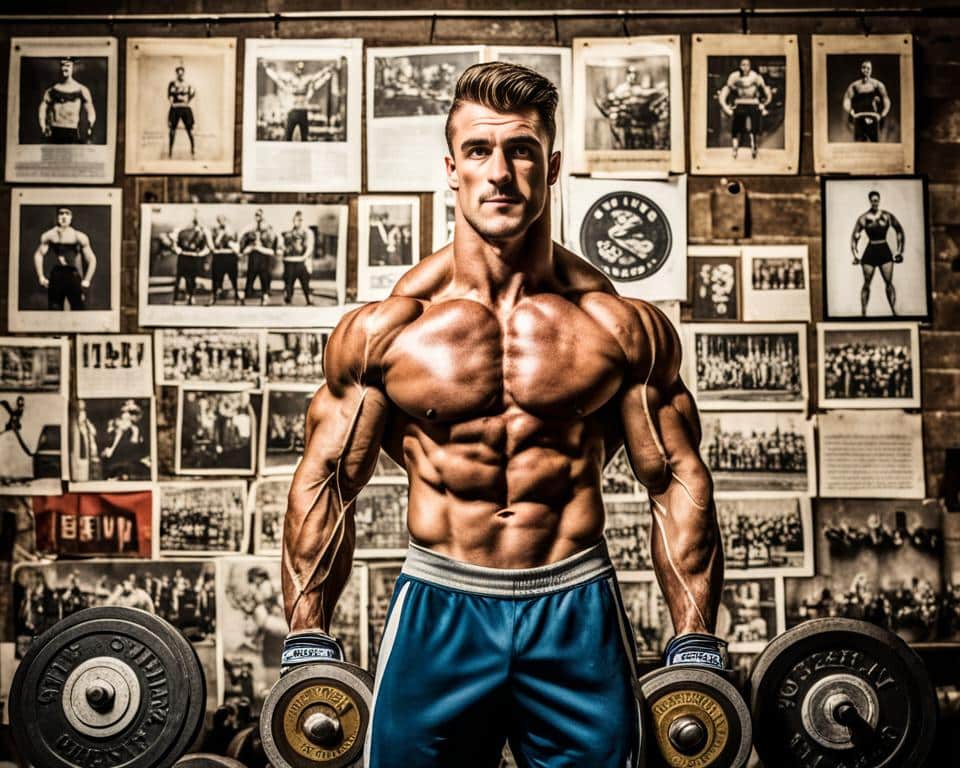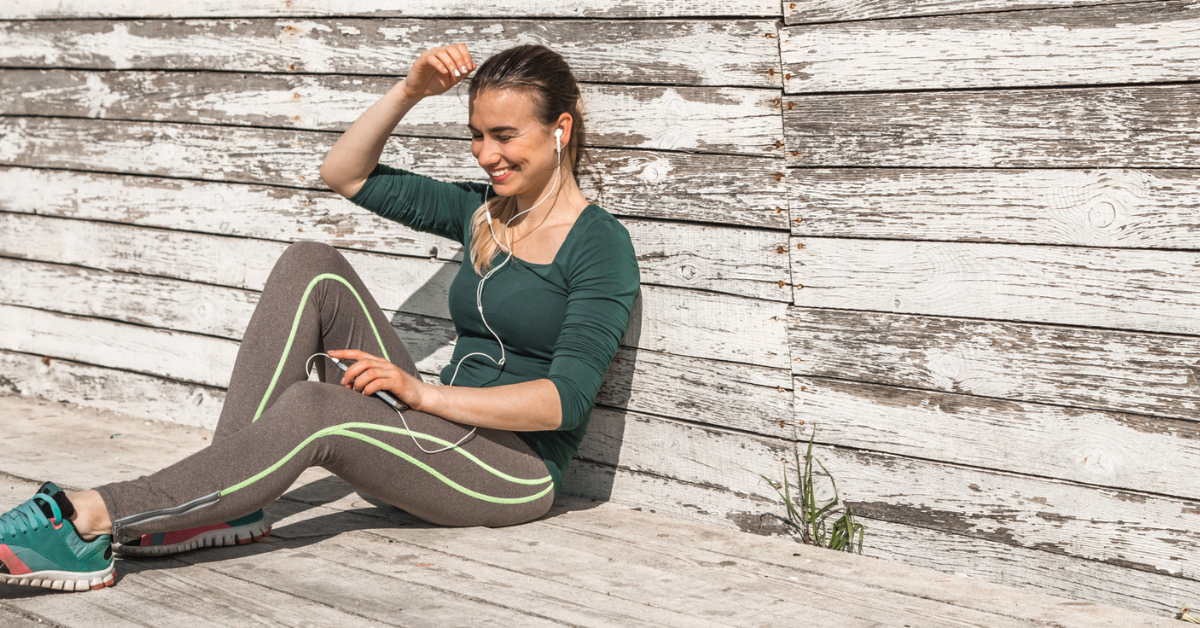
Bulgarian Method Mastery: Get Insanely Strong Fast!
Picture a training plan so tough that athletes face competitions twice as often as usual. Bulgarian method strength training makes this happen. It’s crafted by Ivan Abadjiev from Bulgaria. His method emphasizes hard work and the sole aim of winning.
The Bulgarian method in powerlifting demands a lot from you. It drops the complex training methods for something simpler. Training often with heavy weights is the key. This way, your body keeps adapting to intense loads. Achieving big goals is more important here than perfect technique.
This training path is thrilling but tough. You’ll do a few sets, but with very heavy weights. Focus is on making your legs and back stronger. Athletes in this program don’t just play in a few contests; they go beyond 10 each year.
Key Takeaways:
- The Bulgarian method is about more than strength. It’s about training hard and often.
- Start with weights you can handle and then slowly increase them.
- Your training will mainly involve intense workouts for legs and back.
- Frequent competitions are a big part of this training philosophy.
- Lifting your “daily maximum” isn’t the goal. It’s about reaching your peak when needed.
Unpacking The Bulgarian Method’s Foundation
Ivan Abadjiev created the Bulgarian method for building strength. His ideas changed weightlifting and left a lasting mark. The method isn’t only about getting stronger physically. It also teaches mental toughness.
The Origins and Philosophies of the Bulgarian Method
The Bulgarian method started with Ivan Abadjiev’s simple idea: be consistent. It prepares athletes for top-level strength, inspired by the Harlem Globetrotters’ endurance. The method is tough, with all-day training. Its goal is to build the stamina to lift heavy weights every day.
Understanding the Role of Constant Heavy Stress
The Bulgarian method focuses on adapting to heavy stress. Athletes lift big weights often. This makes them stronger, as their body gets used to the stress. Ivan Abadjiev believed in pushing the body to its limits, then going further.
Misconceptions and Key Points for Starting Right
Beginners might think they should start with heavy weights. But, this can end their training too soon. It’s better to start with lighter weights and slowly increase them. This way, the body adjusts safely and steadily to the training.
| Category | Misconception | Reality |
|---|---|---|
| Starting Weight | Ultra-heavy from day one | Progressive loads |
| Training Frequency | Sporadic heavy days | Regular high intensity |
| Mental Approach | Strength is instant | Patience in progress |
| Success Benchmark | Short-term gains | Long-term adaptation |
Mastering this tough program means respecting the process and the weights. Lifting is more than moving weight; it’s a way to build strength and resilience. Knowing this, you’re ready to start the Bulgarian method on solid ground.
How to get insanely strong with the Bulgarian method
Adopting the Bulgarian method is a big step for anyone into strength training. It’s more than just lifting heavy; it’s about making squatting heavy a part of your daily life. This guide will show you how to push beyond your limits, inspired by Olympic lifters from a small, yet fierce country.
To master the Bulgarian method, focus on five main exercises. These include the Clean and Jerk, Snatch, Power Snatch, Power Clean, and Front Squat. You’ll aim for maximal or near-maximal lifts every time you work out. This means training hard six days a week, but remember to listen to your body to avoid injury.
Mix up your routine
Aiming for victory means being smart about your training. Mix up your routine with different techniques to keep your strength increasing. Introduce cycling, speed work, and block pulls in your deadlift routine to prevent your muscles from getting used to the same exercises. This approach will keep your muscles growing and prevent muscle loss that can start in just three days.
- Maximize muscle size — aim for 12 to 15 sets per muscle, reps between 6 and 12.
- Build unyielding muscle strength — keep it to at least 6 sets in the 1 to 5 rep range.
- Keep the clock in check — limit workouts to 35 to 40 minutes to maintain vital hormone levels.
| Core Lifts | Frequency | Intense Focus |
|---|---|---|
| Squats | Daily | Muscle Strength |
| Olympic Lifts | Three sessions/day | Technical Mastery |
| Accessory Work | Varied | Stimulus Variation |
Getting used to the Bulgarian method takes time. Expect a 2 to 3-week period for your body to adjust to the high intensity. After that, you’ll start seeing significant strength gains. To boost your results, focus on your diet as well. Eat 1 gram of protein per pound of lean body mass daily. Also, balance your carbs and keep fats to less than 20% of your daily calories. Just like Andy Bolton, your strength will grow with each lifestyle choice you make.
“Embrace the grind, respect your recovery, and your strength ceiling will ascend to heights once unimaginable.” — Andy Bolton, Weightlifting Icon
When diving into the Olympic lifts Bulgarian method, you’re embracing a strict discipline. This method has made legends out of ordinary lifters. If you’re ready to learn from the best, to build unrivaled strength, then the Bulgarian method is your path. The top spot is there for the taking, but only for those who commit to squat heavy and often.
The Coach’s Crucial Impact on Success
Success in coaching elite athletes depends on the coach-athlete relationship. Key studies, like the 2008 Canadian Olympic research, prove that intense training works best with a strong bond. This relationship is vital for overcoming challenges and winning in sports.
A Bulgarian method coach does more than guide. They shape an athlete’s spirit and unlock their potential. I’ve seen how trust and good communication with a coach can change an athlete’s career.
Attributes of an Effective Bulgarian Method Coach
These coaches make training programs that push athletes to their limits. They teach them to handle pain and fatigue while aiming for the top. Coaches like Ivan Abadjiev, who understand the hard parts of training, are praised for their dedication to excellence. Their goal is more than making athletes stronger; they also inspire them to overcome obstacles.
Navigating the ‘Dark Side’ of Intense Training Programs
Great coaching comes from understanding difficulties. Coaches must adapt their styles to fit each athlete, like Clara Hughes. Interviews with experts like Melody Davidson and Hayley Wickenheiser taught me that custom coaching is key, even in teams. This approach helps athletes through tough training, making a positive impact on their journey.
Historical Achievements and the Evolution of the System
Bulgarian weightlifting has a rich history of achievements. These feats have helped shape Olympic weightlifting worldwide. As a coach, I teach young athletes using principles from the Bulgarian method. This approach is known for enhancing powerlifting training and peak performance.
The story of Bulgarian weightlifting begins with its early history. The Thracians, known for their metalwork and warrior culture, laid the groundwork. The formation of the First Bulgarian Empire shows the nation’s long-standing emphasis on strength and strategy. These qualities are central to the Bulgarian method used in weightlifting today.
Profiles of Bulgarian Weightlifting Champions
Bulgaria’s legacy isn’t just ancient history. The country has produced many modern weightlifting champions. Athletes like Stefan Botev and Naim Süleymanoğlu stand out. They are known for their strength and technical skill. Their success redefines excellence in Olympic weightlifting.
Bulgarian Vs. World: A Comparison of Training Outcomes
Comparing Bulgarian weightlifting with the world shows big differences. Bulgarian training uses minimal methods but with heavy weights. This approach creates champions. It’s perfect for those who are mentally and physically strong.
| Period | Achievement | Impact on Bulgarian Method |
|---|---|---|
| 1980s-1990s | Multiple Olympic Medals | Validation of high-frequency, high-intensity training principles |
| Post-1990 | Adaptation to Professional Sports | Introduction of Bulgarian method in powerlifting circuits worldwide |
| 21st Century | Continued Success | Ongoing refinement and global adoption of the training system |
The story of Bulgarian weightlifting is a powerful one. The Bulgarian method has played a huge role in its success. This legacy inspires new weightlifters. They dream of winning Olympic medals, following the footsteps of past Bulgarian champions.
Structuring Your Bulgarian Method Training Program
When you start your Bulgarian method journey, creating a good training structure is key. This means combining powerlifting workouts with Olympic lifting. I suggest focusing on a few main lifts very often. This might seem hard but it’s for a good reason.
Your week should include sessions that focus on the snatch, clean & jerk, and squats. Though taking a short break may seem bad, it won’t hurt your strength. Actually, planning recovery times is crucial for keeping your strength up.
Intensity is the most important factor. Working with high intensity but low volume can really boost your strength. Just a few well-done reps at a high effort level could break your squat records.
Strength lives in the mind as well as the body. Talking about recovery is important—we should discuss it more. Taking short breaks can be good for your strength. Powerlifting isn’t a quick journey. After a tough cycle, taking a break won’t hurt your squat strength.
Adjust your training with strategies like rest periods and supersets. Reducing training volume wisely helps keep your strength with less frequent workouts. Remember, sometimes less is more for a longer game. Plan your workouts with focus, not just force.
In a study, 20 male students showed something interesting about Bulgarian squats. They work the quadriceps more than the hamstrings, gluteus maximus, and calf muscles. Consistent technique can bring strength gains in various conditions.
It’s essential to use the least training needed. Sometimes, that means using new tech like vibration platforms. These can activate muscles during Bulgarian squats, proving change can lead to results. This method combines hard work with science for breaking through limits and reaching new heights.
In summary, the right training program structure is vital for success. It’s not just what exercises you do, but how and when you do them. Listen to your body, take rest seriously, and always push further. That’s the essence of the Bulgarian method.
Best Practices Bulgarian Method Strength Training
When discussing the Bulgarian method, we often look up to the greats. Legends like Vasily Alexeev and David Rigert set records and showed us the power of this system. Their success stories teach us about the rewards of sticking to the method and being mentally strong.
Adapting Frequency and Intensity for Personal Gain
Adjusting how often and how intensely you train is key with the Bulgarian method. Research by Prof. Arkady Vorobyev has shown that making your training harder in steps can boost your performance by 61% versus increasing the load slowly. Listening to your body can lead to big improvements, like the leap from lifting 40kg to 44kg with an 85% success rate.

Integrating Recovery and Mental Toughness in Your Regimen
Rest is just as important as the workout. It’s not only about avoiding overtraining but also about letting your body heal properly. Alongside rest, building up your mental strength is crucial. For example, a group of women could lift 24kg after two months thanks to their determination and physical training.
The details behind the training reveal more than just numbers. Below, we compare how different exercises affect muscle activity. It shows the importance of how you move and how changing conditions can increase strength and muscle use.
| Exercise Variation | Muscle Activity | Force Production | Comments |
|---|---|---|---|
| Bulgarian Squats | Increased biceps femoris activation | Lower than suspended lunges | Better for quadriceps over hamstrings |
| Suspended Lunges | Higher activation overall | Highest force on front leg | Significant decrease with BOSU |
| Suspended Lunges-Vibro40 | Highest muscle activity | N/A | Stable conditions increase muscle activity |
| Standard Lunges | Dependent on stability and sex | N/A | Rectus femoris and hamstring activation varies |
To really benefit from the Bulgarian method, combine careful training planning with rest and mental toughness. This balance will make the method more effective, helping you build strength more efficiently.
Conclusion
The Bulgarian method is a big deal in powerlifting. It shows how far you can go with hard work and discipline. It’s for those who aren’t afraid of tough, regular workouts and plans that need a lot of thought. If you’re willing to follow its rules, you could really boost your success in powerlifting.
This method isn’t just about lifting weights. It’s also about having a strong mindset. To hit your strength goals, you need to be tough and deal with the hard demands of the program. Top athletes have shown it works, and now it’s up to new lifters to put in the work and effort to see big results.
Looking to make big improvements? The Bulgarian method might be what you need. But remember, it’s not just about how strong you are. You need to be mentally and physically tough. When we talk about hitting big goals with this method, we’re talking about joining a group of champions. They succeeded not just in competitions, but by sticking to their dedication to lifting.
FAQ
What is the Bulgarian method of strength training?
The Bulgarian method boosts strength with frequent, high-intensity workouts using heavy weights. Coach Ivan Abadjiev created it. It has helped many athletes become incredibly strong.
How do I start implementing the Bulgarian method?
Start by getting to know the main ideas: heavy loads, focusing on a few exercises, and training often. Begin with weights you can handle. Then, slowly add more as you get stronger.
What exercises are central to the Bulgarian method?
Olympic lifts like the snatch and the clean & jerk are key. You’ll also do lots of front and back squats.
How often should I train using the Bulgarian method?
You’ll train six days a week, sometimes more than once a day. This helps your body get used to the stress and build strength.
What role does a coach play in the Bulgarian method?
A coach is crucial. They guide you, make sure you’re doing the exercises right, and support you emotionally and mentally.
What are some notable achievements of the Bulgarian method?
The method has led to many weightlifting wins, like Olympic medals and world records. This was especially true when Ivan Abadjiev was coaching.
How is the Bulgarian method different from traditional strength training?
It’s about lifting heavy often, with just a few exercises. It’s more intense and focuses on getting used to big weights.
How should I structure my training program using the Bulgarian method?
Plan for daily workouts that are intense, with max lifts. Make sure to rest enough so you can keep up the hard work. Incorporate a mix of strength training and bodyweight movements to ensure a well-rounded routine. Don’t neglect your midsection—include calisthenic ab exercises for core to build stability and prevent injury during heavy lifts. Balance is key, so be mindful of proper nutrition and hydration to fuel your progress.
What best practices should I follow for Bulgarian method training?
Adjust the training to what you can handle. Rest well, be mentally strong, and always aim to do better than before.
Can anyone use the Bulgarian method?
It’s great but tough, so it’s best for those who are already strong and committed. Not everyone will find it suitable.
How do I know if I’m ready for the Bulgarian method?
You need lots of strength training experience, good fitness, and fast recovery. Talking to an experienced coach can also help.
What are the risks of the Bulgarian method?
There’s a chance of getting hurt or burnt out because it’s so intense. Listen to your body, do exercises correctly, and rest and eat well.
Are there any dietary recommendations to support Bulgarian method training?
Eat lots of protein, enough carbs for energy, and healthy fats. You’ll need more calories due to all the training. Stay hydrated and balanced nutritionally.
Can the Bulgarian method be adapted for powerlifters?
Yes, powerlifters can use these ideas with lifts like the squat, bench press, and deadlift. They can also train often and intensely, like Olympic lifters.




